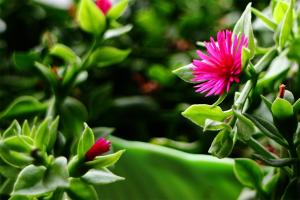How to Care for a Palm Tree Plant Indoor
If you want to bring a touch of the tropics into your home, a palm tree plant is the way to go. Not only are they beautiful and exotic, but they also help to purify the air by removing harmful toxins. However, unlike other houseplants, palm trees require a bit of special care to thrive. Here's how to care for a palm tree plant indoor:
Choose the Right Variety
Before you can start caring for your palm tree plant, it's important to choose the right variety for your home. Some popular indoor palm tree species include the Areca Palm, the Bamboo Palm, and the Kentia Palm. These varieties are known for their ability to tolerate low light and dry air conditions, which make them ideal for indoor environments.
Provide Adequate Lighting
Lighting is one of the most important factors in keeping your palm tree plant healthy. While they prefer bright, indirect sunlight, they can also tolerate lower levels of light. If your palm is not getting enough light, it might start to feel droopy or lose its vibrant green color. Consider using artificial lighting if your home doesn't provide enough natural light for your palm tree.
Watering and Humidity
Watering and humidity are also crucial to a palm tree plant's health. They require a moderate amount of watering and don't like to be over-watered, which can lead to root rot. Allow the top inch or so of soil to dry out between waterings. In terms of humidity, they thrive in high humidity environments, which can be difficult to achieve indoors. To boost humidity, consider regularly misting your palm tree with water or placing a humidifier nearby.
Fertilize Regularly
Palm tree plants also benefit from being fertilized regularly. This is especially important if your palm tree is not getting enough natural light. Use a balanced fertilizer every few months to provide your plant with the necessary nutrients it needs to grow healthy and strong.
Watch for Pests and Diseases
Like any plant, palm tree plants can fall victim to pests and diseases. One common issue is spider mites, which are small insects that can infest the leaves and cause brown spots. Regularly inspect your plant for signs of pests or diseases and address the issue as soon as possible to prevent it from spreading.
Conclusion
Caring for a palm tree plant indoor may seem daunting at first, but with the right knowledge and attention, your plant can thrive in your home environment. Choose the right variety, provide adequate lighting, water and fertilize regularly, watch for pests and diseases, and your palm tree plant will continue to bring a touch of the tropics to your home for years to come.

 how many times do yo...
how many times do yo... how many planted tre...
how many planted tre... how many pine trees ...
how many pine trees ... how many pecan trees...
how many pecan trees... how many plants comp...
how many plants comp... how many plants can ...
how many plants can ... how many plants and ...
how many plants and ... how many pepper plan...
how many pepper plan...





























